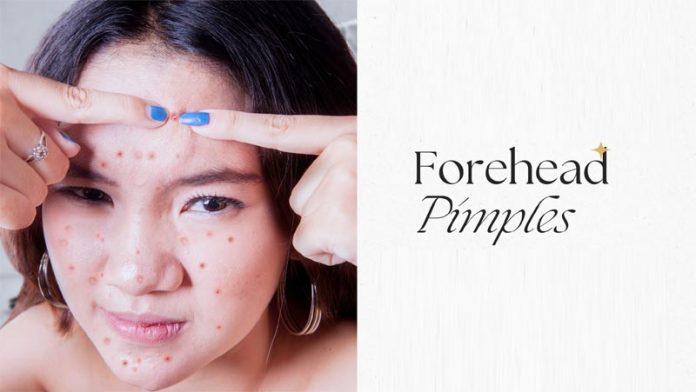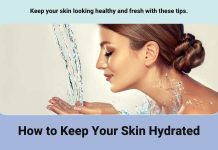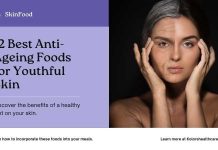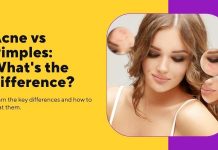People dealing with pimples don’t have similar experiences. Some might have terrible breakouts, while some might develop one or two once a month. Knowing what type is essential if you are having difficulty handling the pimples on your forehead. This will help you choose the proper treatment to flaunt clear skin. Read on to learn about the types, reasons, treatments, prevention tips, and lifestyle changes required to keep forehead pimples at bay.
What Are Forehead Pimples?
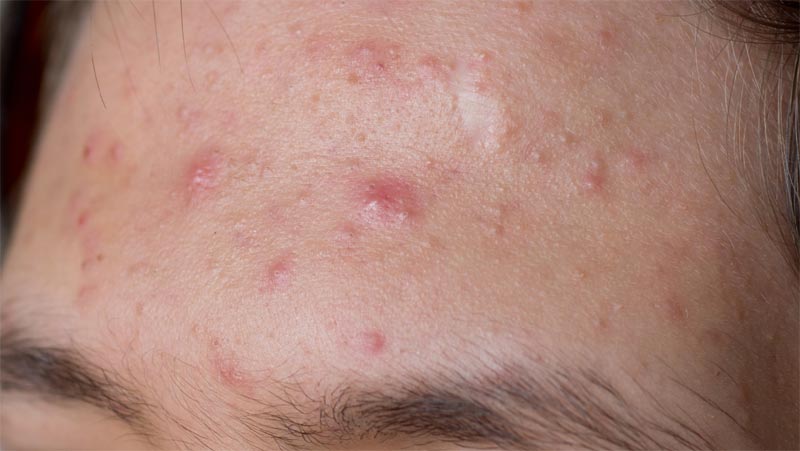
The pimples on the forehead erupt as reddish solid bumps filled with pus with pain. These pimples develop when too much sebum is produced, gets mixed up with dirt, and clogs the skin pores. Generally, forehead pimples affect boys and girls in their adolescent stage, having excess sebum production in the t-zone[1]. Some adults also have forehead pimples due to overactive sebaceous glands. It would help if you got the proper treatment on time to prevent your forehead pimples from worsening, as it leaves scars.
Types of Forehead Pimples
The following are some common types of forehead pimples you need to stay aware of before seeking treatment.
1. Papules and Pustules
The tiny reddish bumps on your forehead without yellowish or white pus in the middle is called a papule. When these red bumps gather pus, it is converted into pustules.
2. Cysts and Nodules
These pimples, called nodules, develop below the skin’s surface as large red bumps bigger than the blemishes. They are slightly hard to touch, while the cysts have a soft feel due to the presence of fluid inside. These pimple types can leave a scar, so they need immediate treatment.
3. Blackheads and Whiteheads
Blackheads appear on your skin as small bumps with a tiny black dot on top. It results from debris or dead skin cells blocking the pores, which turn dark due to oxidation. Conversely, whiteheads appears when the blocked pore gets irritated and changes into flesh or white-coloured bump.
Reasons for Pimples On Forehead
There are several reasons why you keep developing pimples on your forehead constantly. They are:
1. Presence of Dead Cells
Dead skin cells would be the culprit if you thought the oil glands were solely responsible for your forehead pimples. The buildup of dead skin cells in your face might clog the pores and cause the formation of spots on the forehead. You must exfoliate regularly to maintain healthy skin free from clogged pores.
2. Excess Sweat
Sweating or perspiring is excellent for your skin, as it helps detoxify by binding the bacterium to remove it. But sweating can trigger the outbreak of pimples on the forehead if you don’t rinse it off immediately. When the sweat lingers on top of your skin pores, it enhances the follicular oil production and worsens the pimple outbreaks. After a tiring walking session or a strenuous workout session, remember to wash off your sweat to keep pimples away.
3. Specific Haircare Products
If you are using hair products like a pomade with a greasy and thick consistency, it might worsen your blocked pores and trigger the outbreak of forehead pimples. Sometimes, some oil-based ingredients like argan oil might also trigger spots on the forehead.
4. Using Oils of Food-grade
Sometimes, people use food-grade products like olive or coconut oil on the scalp and hair, which might trigger forehead pimples. As these edible products might promote microorganism growth, choosing oils for hair care is advisable.
5. Using Tight Caps, Headbands, Or Scarves
Using a cap, headband, or bandana to cover your hair during workouts or riding a bike might lead to pimples on your forehead. Helmets and hats may also cause spots on the forehead when used regularly for professions like security, sports, etc.
6. Excess Oil Production
The forehead pimples are caused by the excess production of oil by the sebaceous glands. When passed through the skin pores for hydrating and protecting your skin, this oil may get clogged when reaching the skin’s surface. This, in turn, develops as a breeding ground for the pimple-causing bacteria.
7. Too Much Exfoliation
Even though cleansing your skin regularly is essential, doing just what is necessary is crucial. Too much cleansing or exfoliation might make your skin irritated. It can also remove the protective barrier and natural oils in the skin. So, avoid harsh soaps; face washes with highly abrasive beads and chemical scrub to cleanse your face.
Conditions That Cause Forehead Acne
1. Folliculitis
This condition develops in your hair follicles in the forehead due to an infection associated with inflammation. It grows as small pus dots, red bumps, or pustules around the hair follicle. These irritations resemble acne but are associated with hair follicles.
2. Boils
It occurs when a cut or scrape in your forehead through which the harmful Staphylococcal bacteria enter your bloodstream. It infiltrates the skin through minor breaks or cuts. It infects the hair follicles and leads to boils. This skin infection is minor in the oil glands or hair follicles and grows into a lump. Later, the lump transforms into a painful bump filled with pus. They can appear anywhere on the body. However, when they are located on the forehead, they are noticeable and might affect a person’s looks.
3. Contact Dermatitis
It is a common skin condition that arises when your skin comes into contact with an allergen or irritant. Some ingredients in your products, like a detergent or dishwash soap, might also cause this skin reaction. When it comes in contact with the hassle, the skin becomes inflamed and itchy and can develop a rash.
4. Rosacea
Your facial skin may get affected by Rosacea infection, characterized by a reddish look on your forehead, cheeks, nose, and chin. You might also experience symptoms like pimples, bumps, flushing, and persisting reddishness on the skin. In addition to the redness, one might get a stinging sensation, visible blood vessels, and a slight swelling.
5. Ringworm
If your skin has a rash-like appearance in an oval or round shape featuring raised edges, you have a ringworm infection on your forehead. It is also called tinea faciei or facial ringworm condition. It can also be triggered by ringworm infection on the scalp, extending to your face.
6. Cellulitis
This skin infection occurs when Staphylococcal or Streptococcus bacteria enter your skin through a nick or cut. It can make your skin look inflamed and red. When untreated, it can create pus pockets on the forehead, leading to bumps or blisters filled with pus. If left untreated, cellulitis can lead to pus-filled blisters or bumps, especially on the forehead.
How to Get Rid of Forehead Pimples?
There are various treatments available to treat your forehead pimples. They are:
1. Topical Creams
Your dermatologist may prescribe skin creams with effective ingredients like benzoyl peroxide[2] for treating your pimples on the forehead. These creams will target the pimple-causing bacteria and eliminate blocked skin pores. So, it keeps forehead pimples under control while preventing future breakouts.
2. Retinoids
If clogged pores are causing your forehead pimples, then retinoid creams can help clean and unclog them [3]. This medicated cream penetrates deep into your skin layers and alleviates dead cells from blocking the pores to avoid breakouts. However, these creams might aggravate your pimples and redness initially, but they will subside gradually to cure the skin.
3. Antibiotics
If you have persistent or severe forehead pimples, then your doctor might prescribe minocycline or erythromycin antibiotics[4]. These medications will be prescribed along with retinoid creams or Vitamin A solution to remove the sebum in the pores effectively.
4. Anti-androgens
Anti-androgens are potent ingredients that can lower the development of pimples on your forehead by blocking your body’s androgen hormone receptors. Using efficient agents like Flutamide, Cyproterone Acetate, and Spironolactone helps the sebaceous glands to control the production of sebum in the skin[5].
Lifestyle Adjustments to Lower Pimples on Forehead
- Remember to exercise, as it can induce sweating, which can unblock pores. However, make sure you wash as soon as you complete your workouts before your sweat dries off.
- Include beans, almonds, avocados, and berries to lower pimple outbreaks and reduce inflammation.
- Get 10 to 15 minutes of sun exposure daily to absorb natural vitamin D and heal your pimples.
- Drinks lots of water to maintain liver health and prevent hormone spikes, especially during puberty and after workouts.
How to Prevent Forehead Pimples?
- If your t-zone is oily, wash your face two times each day using a gentle cleanser
- Avoid touching the pimples on the forehead to prevent them from spreading through the fingers
- Makeup will block your pores. So, use a mild cleanser to remove makeup every day before sleep
- Wash your hair regularly with zinc shampoo[6], as a greasy mane with dandruff can trigger pimples on your forehead
- Change the pillow covers and bed regularly covers to prevent bacteria from spreading
When To Seek Professional Help
If your forehead pimples keep recurring or remain persistent for weeks with pain and inflammation, seek professional advice at Kolors Healthcare. Your dermatologist at Kolors would suggest the suitable treatment modality after determining the cause triggering it and the severity. Get a complete skin assessment to know the forehead acne grade to zero on the best treatment option from below.
References
- Drs. Tolino, Mambrin, Zuber, Balduzzi, Marchesiello, Sapienza University, Rome – https://www.ncbi.nlm.nih.gov/pmc/articles/PMC5788264/
- Taraneh Matin; Marcus B. Goodman. – https://www.ncbi.nlm.nih.gov/books/NBK537220/
- Department of Dermatology, University of Pennsylvania School of Medicine, Philadelphia, PA USA – https://www.ncbi.nlm.nih.gov/pmc/articles/PMC5574737/
- Dr. Baldwin is the Medical Director of the Acne Treatment and Research Center in Brooklyn, New York – https://www.ncbi.nlm.nih.gov/pmc/articles/PMC7577330/
- Department of Gynecological Endocrinology, Poznan University of Medical Sciences, Poland – https://www.ncbi.nlm.nih.gov/pmc/articles/PMC5925193/
- Dr. Barak-Shinar is Vice President of Clinical, Regulation and Quality Assurance at Kamedis Ltd. in Tel-Aviv, Israel – https://www.ncbi.nlm.nih.gov/pmc/articles/PMC5788265/

